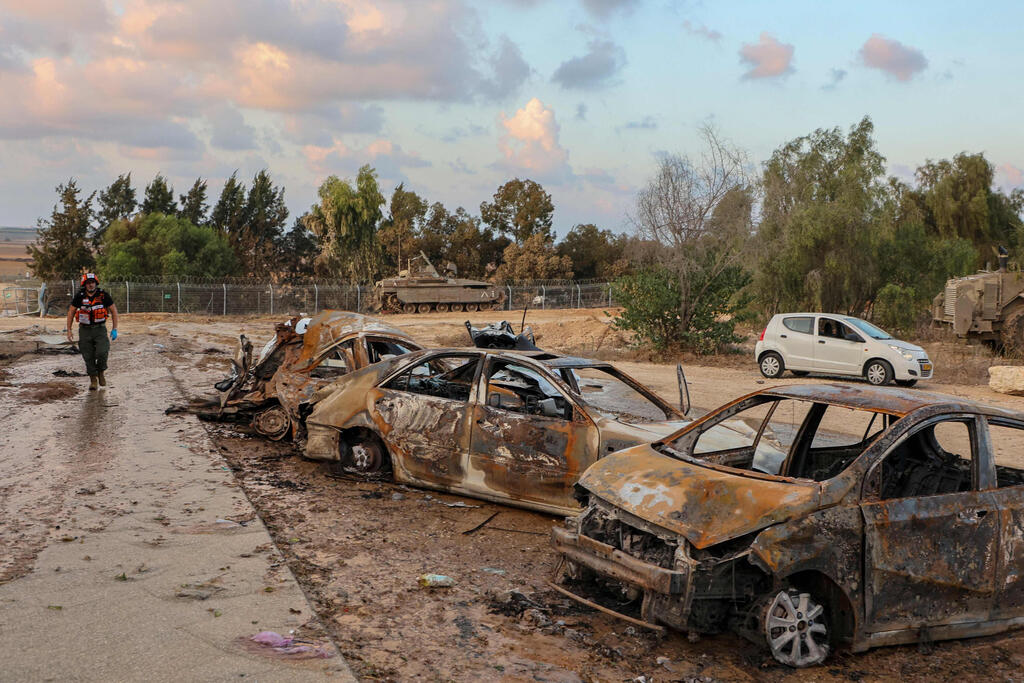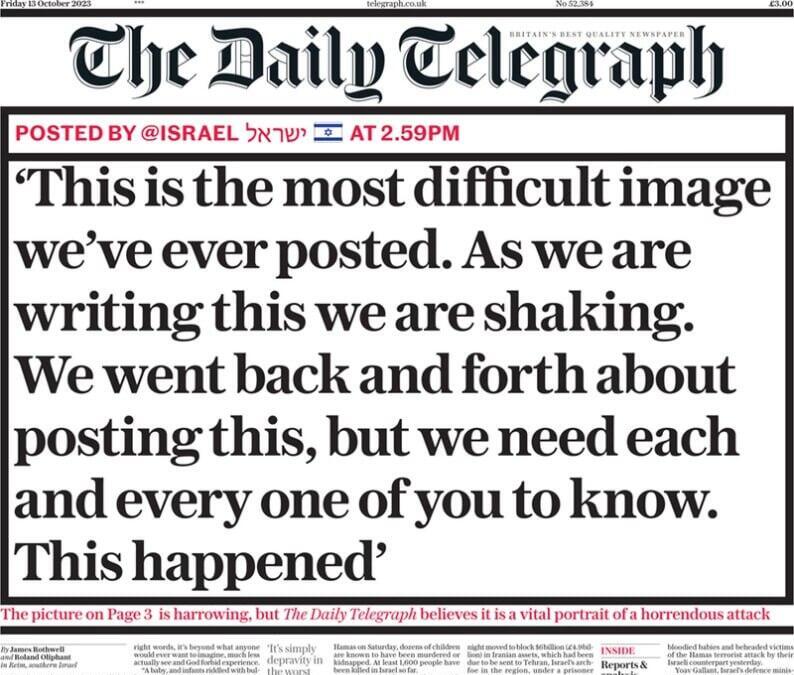Getting your Trinity Audio player ready...
The front page of the British Daily Telegraph newspaper, as well as the main headline on its website, were unusually dedicated to the photo of an Israeli baby murdered by Hamas. The photo that was distributed by Israel's Foreign Ministry has shocked the world.
More stories:
Both the Telegraph's front page and the headline quoted the Foreign Ministry's statement that "This is the hardest picture we've ever published. As we are writing this, our hands are shaking… but we need each and every one of you to know. This happened."
The gruesome photo published on an inside page despite the front page headline, shows a baby covered in blood who was murdered by Hamas terrorists; two other photos of babies who were burned to death also were distributed. The Telegraph's unusual choice to publish the photo comes against the background of attempts to blur and hide the atrocities committed by Hamas terrorists, alongside conspiracy theories on social media that they did not massacre children. Following this, Israel took off the gloves in the battle to inform global public opinion, and decided to spread photos and personal testimonies of the massacre in the Gaza Strip on its official social network accounts, and not only through the foreign media as has been done so far.
Discussions were held at the Foreign Ministry where both the public diplomacy and the political considerations were examined, and at the end the decision was made that the scenes of horror should be presented in the official social media accounts. "What was is not what will be. The events necessitated the change of how we spread information," said the head of the digital division at the Foreign Ministry, David Saranga.
2 View gallery


The ruins of Kfar Aza, where Hamas terrorists committed atrocities against civilian population
(Photo: GIL COHEN-MAGEN / AFP)
In the photos that the Foreign Ministry decided to show to the world, you can see charred corpses set on fire by the terrorists, Hamas terrorists transporting the corpses of women in a van while sitting on them, photos of dozens of corpses lying on the ground after the inferno at the nature party, Hamas terrorists shooting dogs and burning residents' houses in Gaza-border communities.
The harsh scenes and the stories of the victims succeeded in "setting fire to the web," and in the first five days of the war, 1,450 posts and tweets were uploaded that received about half a billion hits on the various platforms - equal to the number of hits that the Foreign Ministry sites receive for six months on all platforms. In the meantime, the pressure seems to be working: a survey by The Economist found that since the outbreak of hostilities positive public opinion in the United States toward Israel has reached 42% support - an 11% increase compared to the last survey conducted in March.



